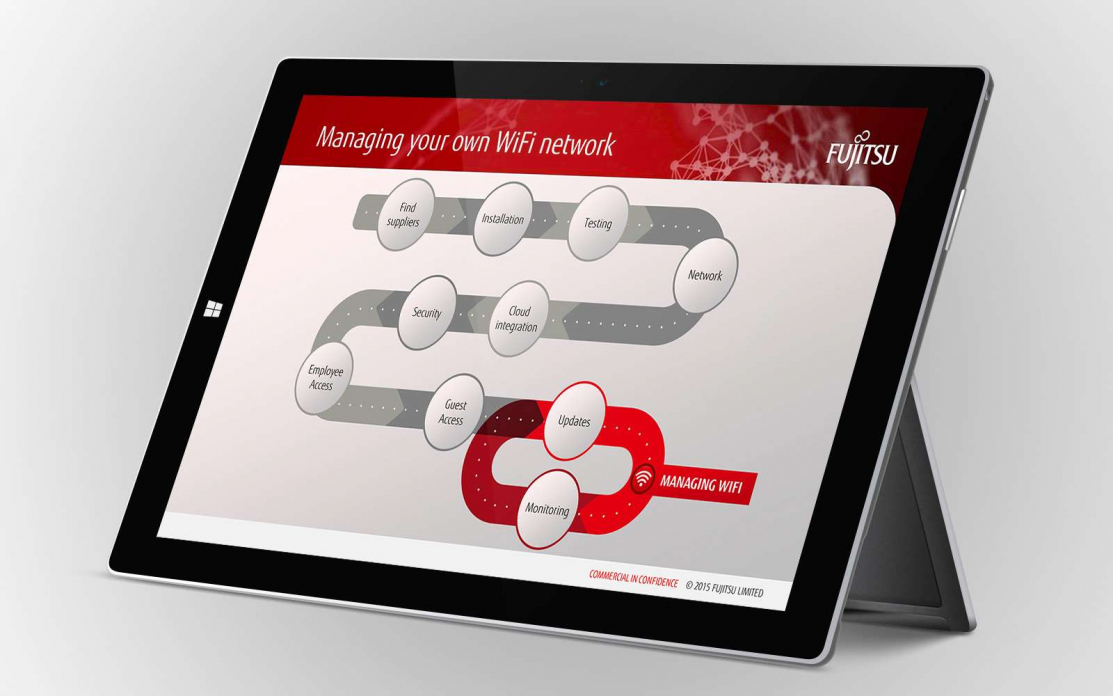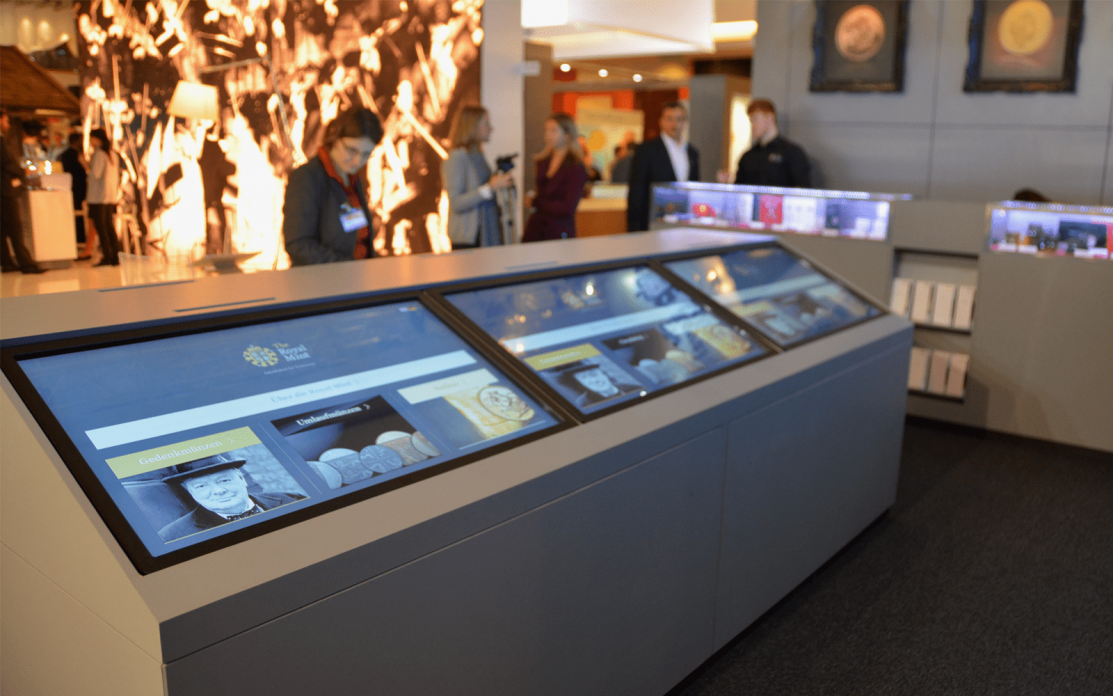More and more of us are becoming aware that people now expect a personalised customer experience when they engage with us.
But what does that actually mean? Well, if you’re engaging with them online, for example, it doesn’t hurt to know their name and their interests (presuming they’re happy to give them, of course – GDPR and all that).
But what about if you’ve gone the extra mile to deliver an all-singing, all-dancing interactive customer experience on something like a touchscreen experiences? Maybe you want to turn heads, and get people more aware of your brand and your solutions.
An interactive experience that’s delivered on a touchscreen can deliver the ‘WOW’ factor – but how can you delight your customers once they’re using it?
Regardless of how you’re delivering your interactive customer experience, we’ve provided some of the best ways to go above and beyond their expectations. After all, here at POP, it’s something we help companies like Bosch, Roche and Arm achieve every day.
Start with the basics (and know who they are)
It may seem like stating the obvious, but the first thing you need to do before going any further when creating a personalised customer experience of any kind is to know who you’ll be creating it for. In other words, who’s going to be using it at the end of the day.
You probably know a good deal about your customers already – and may even have piles of data you can look to in order to get some more key insights on their behaviour. What are their likes and dislikes? Where do they like to hang out? What are their goals, or concerns? What are they going to want from this experience?
Make it fun, engaging and speaking directly to them – for instance, you can even allow them to enter their name when they begin – and all of these things can go towards at least creating a more personalised experience they’ll appreciate, regardless of the platforms you choose to engage them on.
TIP: Don’t forget to look at the current trends and challenges for interactive presentations. This is another good way of showing you understand them, and know who they are.
Tailor their content by applying some advanced features
Depending on the type of interactive experience and where it’ll be positioned, you could use some fairly advanced features, such as demographic recognition. This means that the interactive experience can recognise the demographics of the person standing in front of it and adapt the types of specific content they’ll see.
Another potential idea is facial recognition. We love that this is now a thing, and now, in America, some customers can happily walk into a burger shop (like BurgerFi and CaliBurger) only for the system to immediately remember their favourite burger.
Facial recognition can be a great tool for a number of different applications, although not everyone’s sold on it yet. But when a customer gets in touch with you, they now expect you to know their name, any issues they’ve had in the past, and even their purchase history.
That doesn’t mean you should keep more information than absolutely necessary (again, GDPR), but you can still ensure you have all the information you need to provide the most personalised shopping experience possible.
Put them front-and-centre of an interactive story
Interactive stories or videos are a fantastic way of getting your customers fully engaged and participating in your experience. Why? Because it puts them in the driving seat and gives them control of what happens next – so it feels more personal.
It’s not exactly a new concept – over the years, this has been a tried and tested way to get people engaging with brands. For instance, do you remember a few years ago when everyone was talking about Honda’s campaign for the Civic R; The Other Side?
This campaign gave Honda practically unheard of levels of attention in their industry, and doubled traffic to Civic’s website. And now that we’re seeing things like Black Mirror’s ‘Bandersnatch’ and other interactive shows, it couldn’t be more timely.
TIP: Even if you’re not developing an interactive touchscreen experience, interactive content in general is a surefire winner if you want to really get people engaged! Check out these compelling interactive content statistics, for a start.
Don’t forget the little things!
For a truly enjoyable, personalised experience, you need to remember to include micro-interactions and micro-effects; in other words, those tiny, very subtle details that make an interactive customer experience fun, satisfying and enjoyable.
You can add personal cues (if you’ve already got the person’s name, or their past choices, for instance) or pretty effects, sounds and visuals for each action a person takes when using your experience, which keeps their attention and surprises them at every turn.
It may sound like a frivolous afterthought, but actually, micro-interactions serve a very important function in terms of keeping people engaged and using your experience for longer – it also helps make it more memorable.
After all, if you’re investing in a personalised customer experience for your company, you’re going to want to ensure a good ROI – or, at the very least, that people are actually going to be using it. There’s a certain amount of psychology involved here, and it really is a key element.
Advice from an interactive design agency
There are so many ways now for customers to interact with your brand. There’s a lot to be said for offering them a personalised shopping experience that’s fun and memorable, and that delights them at every turn.
How you go about creating an interactive customer experience will really depend on your industry, your customers, and the purpose of the experience you wish to create. There are so many considerations to think about, however, the above points are essential to think about if you want something that’s personalised.
If it’s your first time creating an interactive customer experience and think a touchscreen, touchwall or touchtable is the way to go, we’ve gone into quite a lot of detail on our blog about where to start with an interactive touchscreen experience, and how customers can interact with your brand on an interactive touchscreen.
But, if you just want to learn more about your options and what’s possible at this stage, we’d recommend getting in touch with an interactive design agency or touchscreen specialist, so they can listen to what you’re trying to achieve and give you some free, no-strings advice.
Personalising your interactive customer experiences
We hope you’ve enjoyed reading this guide. Would you like to know more about creating a personalised interactive touchscreen experience your customers will love? Watch this video and find out what can be achieved with POP’s sales experiences platform…
Help your buyers quickly make sense of complex products and information so they can make smarter, faster buying decisions.
Find out how you can use POPcomms interactive presentation software to support your buyers and sellers.
Related Posts

Why Immersive Technology & Brand Storytelling Are A Great Fit
Read

Guide to Micro-Interactions for Interactive Touchscreen Experiences
Read

How to Increase Gallery Archives & Museum Accessibility for Visitors
Read

Improve Corporate Communications With Interactive Touchscreen Experiences
Read